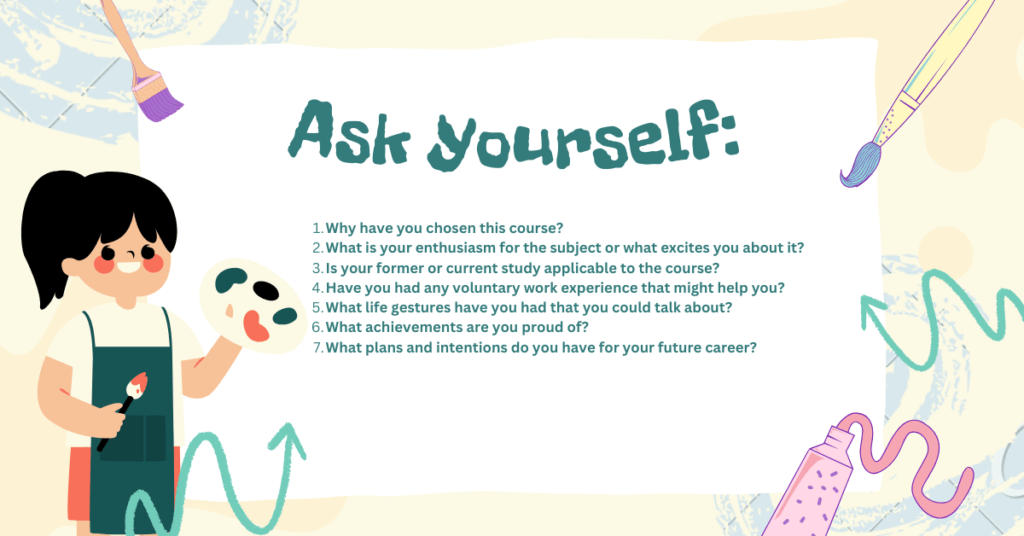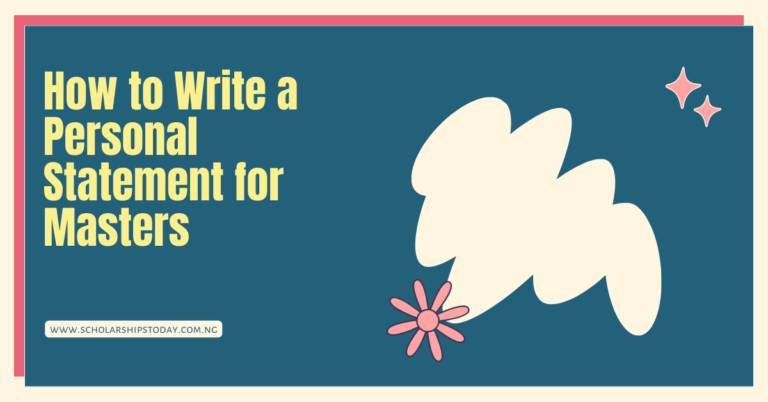A good personal statement for admission can increase your chance of securing that admission, and you’re about to learn how to write one.
Admission into higher institutions of learning is always in high demand as many applicants seek admission, especially scholarship admission.
A personal statement gives the admissions officers of the institution a more comprehensive picture of your identities, values, and experiences.
It enables you to highlight your advantages, successes, and leadership skills that could not be adequately expressed in other application sections like exam results and grades.
With a personal statement for admission, you are able to discuss your motivations for studying a specific program or course of study, as well as any difficulties or barriers you may have encountered and how you overcame them.
This can help set you apart and distinguish you from the competition and provide strong evidence for why you would be a beneficial addition to the school.
So let’s look at how to write a personal statement for admission that increases your chance of winning.

How to Write a Personal Statement for Admission
In writing, some students do make use of the Personal Statement Template for a Scholarship. This helps guide you in writing any kind of personal statement, whether it’s a personal statement for a Master’s scholarship or PhD.
But before then, you first need to meticulously read the instructions outlined by the institution to know the format, word count, and others.
Some institutions will require you to write a 500-word personal statement using font types like Arial, Calibri, or Times New Roman. Some will specify the font size, size 12, 13, or 14 depending on the institution.
Some will ask that you submit your personal statement in Docx or PDF format.
These are a few essentials you need to consider before writing.
In a situation where those are not articulated, try to keep your statement within 500 – 750 words.
Structure your personal statement to follow a logical, regular structure, where each paragraph follows on from the one ahead. Make sure paragraphs are short, clear, and to the point while highlighting your academic interests and future plans.
You may answer the following questions to start:
- Why have you chosen this course?
- What is your enthusiasm for the subject or what excites you about it?
- Is your former or current study applicable to the course?
- Have you had any voluntary work experience that might help you?
- What life gestures have you had that you could talk about?
- What achievements are you proud of?
- What plans and intentions do you have for your future career?
Draft and revise your statement until you are satisfied with the content.

Before submitting it, you might want to seek the opinion of a friend, family member, or career mentor to know if you’ve properly conveyed your intended message.
Then, proofread it for any grammatical errors. Remember that your personal statement represents you – it speaks before you can ever have the opportunity of speaking for yourself.
When writing, ensure your tone is not too relaxed. Write as if you are speaking to an aged relative or a trusted schoolteacher. This way, you will come across as respectful, confident, and honest.
FAQS
How to Write a Personal Statement for Admission Into a University?
Start with your “why”. In your essay, explain what sparked your interest in the specific program and university. If you’ve relevant achievements, showcase them. It could be personal or extracurricular activities.
How Do You Introduce Yourself in a Personal Statement for the University?
Avoid clichés: Skip generic introductions like “My name is…” or “I have always wanted to…” Link your opening to your academic or personal motivations.
And ultimately, be genuine. Let your personality and voice shine through in your introduction.
How Do You End a Personal Statement for University Examples?
Reiterate your passion. Let the reader feel your enthusiasm for the program and university.
Another format could be to share your aspirations and how the university will help you achieve them.
Final Thought
Remember that your personal statement should be around 500 words if there is no stipulated word count.
This equates to one side of A4. Some universities require more, often two sides. Some institutions also set a character limit instead of a specific word count, so you must check the application guidelines.
As they’re relatively short in nature, don’t waste words on unnecessary information. Focus on why you want to study that particular program and your potential to complete the course.
Give yourself plenty of time and don’t rush. Your personal statement can make or break your application, so it needs to be perfect.






